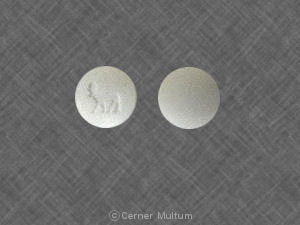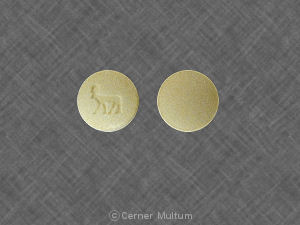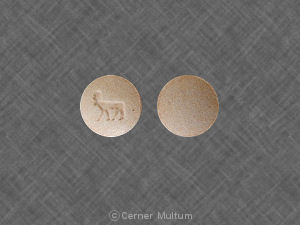What is the most important information I should know about repaglinide?
You should not use repaglinide if you have type 1 diabetes, severe liver disease, or diabetic ketoacidosis.
You should not use repaglinide together with gemfibrozil (Lopid) or NPH insulin (such as isophane insulin).
What is repaglinide?
Repaglinide is an oral diabetes medicine that helps control blood sugar levels by causing the pancreas to produce insulin.
Repaglinide is used together with diet and exercise to improve blood sugar control in adults with type 2 diabetes mellitus. This medicine is not for treating type 1 diabetes.
Repaglinide may also be used for purposes not listed in this medication guide.
What should I discuss with my healthcare provider before taking repaglinide?
You should not use repaglinide if you are allergic to it, or if you have:
- severe liver disease;
- diabetic ketoacidosis (call your doctor for treatment with insulin); or
- if you also take gemfibrozil.
To make sure repaglinide is safe for you, tell your doctor if you have:
- liver disease; or
- if you also take metformin or other diabetes medicines.
Follow your doctor's instructions about using this medicine if you are pregnant. Blood sugar control is very important during pregnancy, and your dose needs may be different during each trimester.
It is not known whether repaglinide passes into breast milk or if it could harm a nursing baby. You should not breast-feed while using this medicine.
Repaglinide is not approved for use by anyone younger than 18 years old.
How should I take repaglinide?
Follow all directions on your prescription label. Your doctor may occasionally change your dose. Do not take this medicine in larger or smaller amounts or for longer than recommended.
Repaglinide is usually taken 2 to 4 times daily, within 30 minutes before eating a meal. Follow your doctor's instructions. If you skip a meal, do not take your dose of repaglinide. Wait until your next meal.
Your blood sugar will need to be checked often, and you may need other blood tests at your doctor's office.
Low blood sugar (hypoglycemia) can happen to everyone who has diabetes. Symptoms include headache, hunger, sweating, irritability, dizziness, nausea, fast heart rate, and feeling anxious or shaky. To quickly treat low blood sugar, always keep a fast-acting source of sugar with you such as fruit juice, hard candy, crackers, raisins, or non-diet soda.
Your doctor can prescribe a glucagon emergency injection kit to use in case you have severe hypoglycemia and cannot eat or drink. Be sure your family and close friends know how to give you this injection in an emergency.
Blood sugar levels can be affected by stress, illness, surgery, exercise, alcohol use, or skipping meals. Ask your doctor before changing your dose or medication schedule.
Repaglinide is only part of a treatment program that may also include diet, exercise, weight control, blood sugar testing, and special medical care. Follow your doctor's instructions very closely.
Store repaglinide at room temperature away from moisture and heat.
What happens if I miss a dose?
Take the missed dose as soon as you remember, but only if you are getting ready to eat a meal. Skip the missed dose if it is almost time for your next scheduled dose. Do not take extra medicine to make up the missed dose.
What happens if I overdose?
Seek emergency medical attention or call the Poison Help line at 1-800-222-1222. A repaglinide overdose can cause life-threatening hypoglycemia.
Symptoms of severe hypoglycemia include extreme weakness, blurred vision, sweating, trouble speaking, tremors, stomach pain, confusion, and seizure (convulsions).
What should I avoid while taking repaglinide?
Avoid drinking alcohol. It lowers blood sugar and may interfere with your diabetes treatment.
What are the possible side effects of repaglinide?
Get emergency medical help if you have signs of an allergic reaction: hives; difficulty breathing; swelling of your face, lips, tongue, or throat.
Call your doctor at once if you have:
- severe pain in your upper stomach spreading to your back, nausea and vomiting, fast heart rate;
- pale or yellowed skin, dark colored urine, fever, confusion or weakness; or
-
severe skin reaction --fever, sore throat, swelling in your face or tongue, burning in your eyes, skin pain, followed by a red or purple skin rash that spreads (especially in the face or upper body) and causes blistering and peeling.
Common side effects may include:
- low blood sugar;
- nausea, diarrhea;
- headache, back pain;
- joint pain; or
- cold symptoms such as stuffy nose, sneezing, sore throat.
This is not a complete list of side effects and others may occur. Call your doctor for medical advice about side effects. You may report side effects to FDA at 1-800-FDA-1088.
What other drugs will affect repaglinide?
Many other medicines that can increase or decrease the effects of repaglinide on lowering your blood sugar. This includes prescription and over-the-counter medicines, vitamins, and herbal products. Tell each of your health care providers about all medicines you use now and any medicine you start or stop using.
Where can I get more information?
Your pharmacist can provide more information about repaglinide.
Remember, keep this and all other medicines out of the reach of children, never share your medicines with others, and use this medication only for the indication prescribed.
Every effort has been made to ensure that the information provided by Cerner Multum, Inc. ('Multum') is accurate, up-to-date, and complete, but no guarantee is made to that effect. Drug information contained herein may be time sensitive. Multum information has been compiled for use by healthcare practitioners and consumers in the United States and therefore Multum does not warrant that uses outside of the United States are appropriate, unless specifically indicated otherwise. Multum's drug information does not endorse drugs, diagnose patients or recommend therapy. Multum's drug information is an informational resource designed to assist licensed healthcare practitioners in caring for their patients and/or to serve consumers viewing this service as a supplement to, and not a substitute for, the expertise, skill, knowledge and judgment of healthcare practitioners. The absence of a warning for a given drug or drug combination in no way should be construed to indicate that the drug or drug combination is safe, effective or appropriate for any given patient. Multum does not assume any responsibility for any aspect of healthcare administered with the aid of information Multum provides. The information contained herein is not intended to cover all possible uses, directions, precautions, warnings, drug interactions, allergic reactions, or adverse effects. If you have questions about the drugs you are taking, check with your doctor, nurse or pharmacist.
Copyright 1996-2018 Cerner Multum, Inc. Version: 9.01. Revision date: 9/6/2017.


